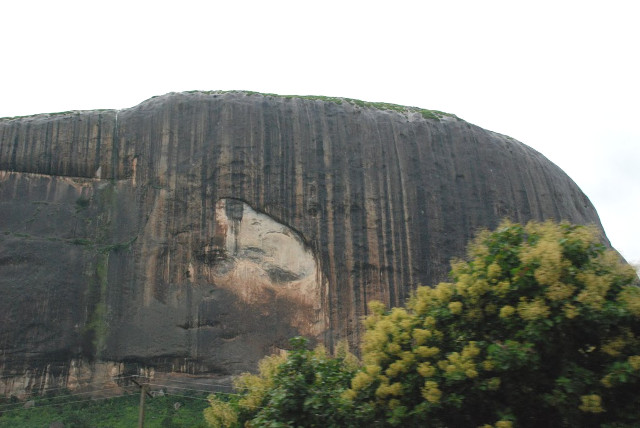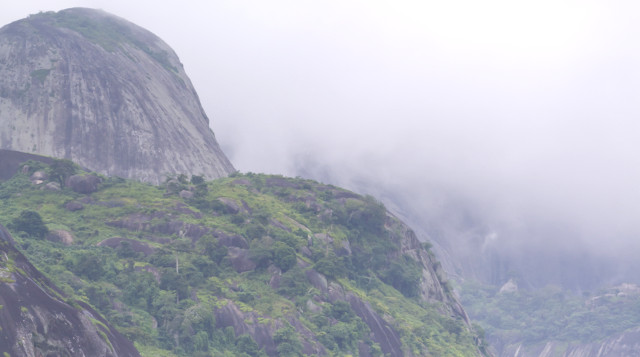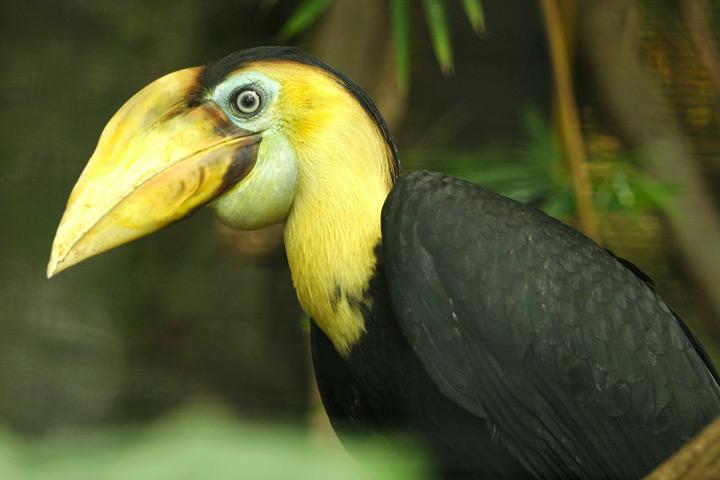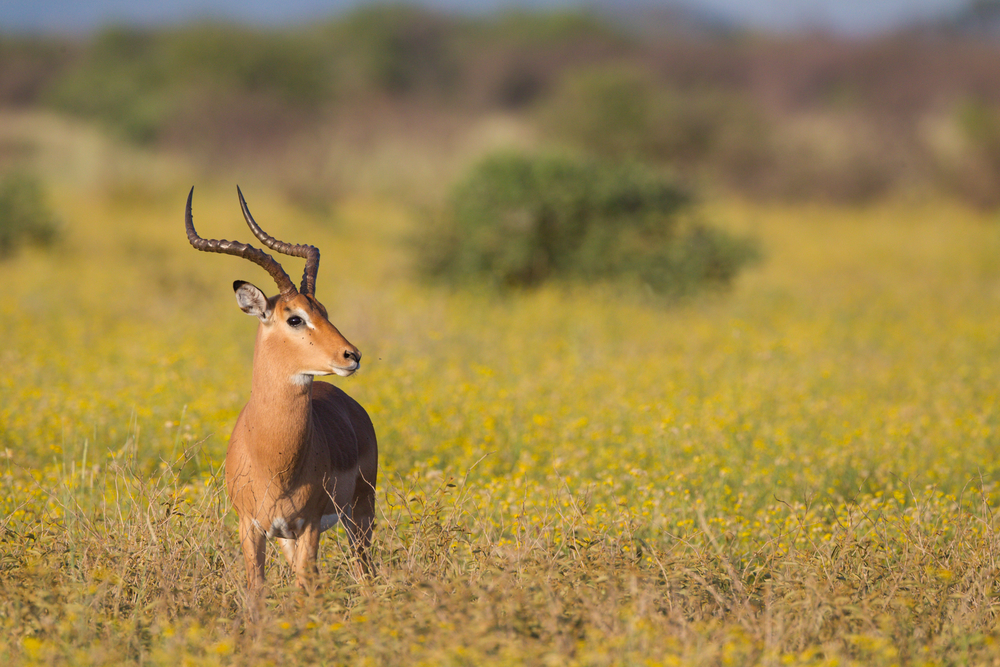There is a wide variety of fantastic nature in Nigeria, often off the beaten path and unknown to most international tourists. Historically, the country hasn’t done much to promote these natural wonders, but in the last decade it has taken baby steps to market them to tourists and conserve them as national parks. Some wonders, such as Yankari National Park and Olumo Rock are well traveled to, while others, even Nigerians don’t frequent often. Whether they are filled with Nigerians on holiday or without a person in sight, here are 15 great nature spots to see around Nigeria.
1. Yankari National Park
Located in the southern part of the Sudan Savanna, this large wildlife park features numerous animals and warm springs. The park’s range of wildlife includes over 350 species of birds and one of the largest elephant populations in West Africa. The tourist center in the park, called the Wikki Camp, features the Wikki Warm Spring (open 24 hours a day for swimming), safari excursions, and over 100 chalets for getting a night’s rest.
2. Owu Falls
While not as majestic as Victoria Falls, Owu Falls is the highest waterfall in Nigeria and West Africa, rising 330 feet above the ground. Legend has it that the waterfall was once home to a giant snake that threatened the local villagers until 1940. Whether that legend is true or not, visitors don’t have to worry about it anymore. It’s best to visit during the rainy season, though be warned, the road to get there is a bit rough.
3. Zuma Rock
Famous enough to get on the N100 note, Zuma Rock (actually a monolith) is also the natural symbol of Abuja and referred to as the “Gateway to Abuja.” The rock is 725 meters high and over 3 km around, making it look more like a mountain coming out of the ground than a mere rock. Arguably the most interesting feature of the rock is the human-like face on the side of it. It was believed that the rock possessed special powers and rendered enemies defenseless when the Gwari natives previously used it in local tribal wars.
4. Ikogosi Warm And Cold Springs
Set in the western side of Ekiti State, this geological paradox is a one-of-a-kind phenomenon. The warm and cold springs which flow right next to each other originate from the same rock formation, mingle for a bit at one point, separate, then retain their temperatures as they meander through the countryside. Folklore has it that the springs were once the wives of a hunter, one of his wives being hot-tempered and the other one being quiet. One day long ago, the wives had a fight between each other and turned into the springs themselves.
5. Gurara Falls
About an hour and a half drive from Abuja, this waterfall is 200 meters wide with a drop of 30 meters. The rough falls occur where the Gurara River and other tributaries from the Niger River converge, creating a flowing curtain that churned slowly through the ages, carving the cliffs which surround it. As with other falls, it is best to go in the rainy season when the water level is at its peak, although even in the dry season there are six small streams that flowing down it. People can swim during the dry season, but this isn’t allowed during the rainy season as the water is too rough.
6. Olumo Rock
This popular tourist destination once provided sanctuary to the local Egba people and served as a lookout point during 19th century tribal wars. Man-made stairs are carved into the rock that allow visitors to make the journey to the top and enjoy a great vantage point of the surrounding area. An elevator provides frequent service to the top for those that aren’t savvy hikers. While there, tourists can visit a museum and restaurants.
7. Obudu Mountain
With breathtaking views almost 1600m above sea level and a peak often surrounded by low-lying clouds, Odubu and the surrounding area has become a popular site for Nigerians and tourists to get away from it all. The longest cable car system in Nigeria is located here, and takes guests up through the tree canopy to the top of the mountain. There is also a canopy walk that allows for equally scenic vistas.
8. Idanre Hills
These magical hills were once inhabited by the Idanre people who lived on the peaks for 800 years before settling in the valley below. Set in an area of cultural relics from the 17th century, the Idanre Hills rise up out of the surrounding mist. It’s 640 steps from the base of the hills to the peak, with five resting spots in between to help people gather themselves on the steep vertical climb. Other interesting features include an inscription on the rocks similar to hieroglyphics that is yet to be translated, along with an ancient palace decorated with multiple carvings.
9. Cross River National Park
This park is the last rain forest in Nigeria, preserved via the Nigerian Conservation Foundation, and currently billed as “the pride of Nigeria.” It is home to indigenous white-faced monkey, drills, lowland gorillas, and forest elephants. It also includes Kwa falls, another beautiful, yet smaller waterfall surrounded by lush rain forest canopy. The Sankwala Mountains run through the park and reach a height of 1,700m, and trees through the park reach heights of over 50m.
10. Hadejia-Nguru Wetlands
Located in northern Nigeria, these wetlands are part of the Chad Basin and are considered internationally important because of the waterbirds they contain. Many birds make their winter homes here, and if you are avid birdwatcher, this is definitely a spot to check out. Unfortunately, the area experienced droughts since the 1980s, and dams in the area are increasingly threatening the creatures that live there.
11. Okomu National Park
This large area northwest of Benin City now only has fragments of a massive forest that once covered the region, and is also one of the last habitats for numerous endangered species, such as the African forest elephant. There are also around 150 birds that live in the area, such as the grey parrot and the wrinkled hornbill (pictured above).
12. Old Oyo National Park
Old Oyo National Park is a great example of the rise of eco-tourism in this area of Nigeria. The park has an abundance of wildlife, water recreational activities, facilities for bird watchers and a deep cultural heritage which attracts many visitors.
13. Kamuku National Park
Kamuku National Park is located in Bimin Gwari, in the north-central part of Nigeria. The park boasts a land area of approximately 1,120 square kilometers of typical savannah woodland vegetation. The flowers and fauna are richly diverse with the dominant species being Isoberlina, Daniellia Raphia and a few lily plant species. The park is also incredibly diverse and supports around 19 species of mammal including elephants, antelopes, warthogs, monkeys and baboons. This destination is perfect for people interested in botany.
14. Afi Mountain Wildlife Sanctuary
On Afi Mountain, thanks to a rigorous protection scheme, many endangered species including the Nigerian chimpanzee and Cross River gorilla live peacefully and without fear of poachers. The wildlife sanctuary is listed as an Important Bird Area and the avid birdwatcher would not want to miss viewing one of the largest migratory swallow roosts in Africa.
15. Gashaka-Gumti National Park
Rounding out our list is the largest national park in Nigeria, which covers around 6,600 square kilometers. The park is located in a mountainous area of northeast Nigeria and shares its border with Cameroon. Altitudes in the park range from 450m to 2400m in the Gangirwal area, which translates to “mountain of death” and is the tallest mountain in Nigeria. There are no roads that cross this massive natural park, and trekking across Gangirwal alone takes about 7-10 days.
More from AFKTravel:
10 Intriguing Historic Attractions In Nigeria
Bukas: A Look At Nigerian Street Food
Want to discover the finer side of Africa? Sign up for our weekly newsletter.








